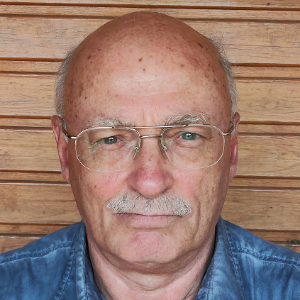Title : On the width of gamma line and the photon structure
Abstract:
The reason to turn once again to the question of the natural width ?γ of the photon or γ-radiation line is provided by the discovery of an increase in the half-life T1/2 for nuclear isomers in a metal matrix (see ref. [1, 2] and references therein). For nuclei in such a matrix, a decrease in the width ?γ can be expected, since, according to generally accepted concepts, ?γ ? ? / T1/2 for the emission of photons in a transition from an excited state E* of a half-life T1/2 to the ground state. However, even in early Mössbauer experiments with the 57mFe isomer (E* = 14 keV, T1/2 = 98 ns), a decrease in ?γ was observed with an increase in the age of the E* level (see, e.g., ref. [3]), which could be interpreted as a result of a decrease in the level width with its age. But such an interpretation is not allowed by the experiment [4] with the 181mTa isomer (T1/2 = 6 µs), in which broadening of the 6.2 keV γ-line was observed due only to the shading of the absorber from the emitter by a mechanical shutter, which opened their mutual visibility for a time of 1 µs without referencing by the time the isomer was formed. Hence it follows that the width ?γ is determined not by the value of T1/2, but only by the time Tγ, which in the Mössbaur experiments the absorber nucleus sees the emitter before the emission of an energy quantum. Of course, if there are no restrictions on the measurement time of the width ?γ, then the average value Tγ is proportional to T1/2. Then, taking into account that the energy of the γ-transition is emitted in less than 1 ns – this can be seen, for example, from the duration of the γ-signal in the scintillator, we can assume the following photon structure [5]. Immediately after the formation of the excited state E*, the nucleus begins to emit an electromagnetic wave of frequency ω that does not carry energy – abbreviated as a 0-wave. The duration of this 0-wave determines the width ?γ. The energy quantum ?ω is emitted at the end of the 0-wave. The energy ?ω may not be emitted at all if the state E* decays via another channel, and then the 0-wave will exist on its own, without an energy quantum. A possible source of the 0-wave is the virtual transitions from the E* level to the ground state and back before the emission of an energy quantum. The 0-wave with a quantum ?ω “on its tail” resembles a pilot wave introduced by De Broglie to explain the wave-particle duality of electrons. It is interesting to study effect of 0-waves on absorber nuclei, for example, to search for the modulation of the ?γ value via an additional resonance irradiation of the absorber in Mössbaur experiments.
Audience Take Away Notes :
- The proposed structure of the photon makes it possible to explain the corpuscular-wave dualism of the photon – the 0 wave is responsible for the wave properties of the photon, the singularity “on the tail” of the 0-wave in the form of an energy quantum propagates along with the 0-wave and is responsible for the photon corpuscular properties.
- With such a description of the photon structure, many unresolved questions remain. In particular, the structure of the energy quantum “on the tail” of the 0-wave is unclear, and the mechanism by which the 0-waves can narrow the absorption line of γ-quanta is unclear also.
- But already now we can hope that 0-waves will find their application. For example, by detecting a 0-wave, one can in principle detect an excited object and predict its future decay. It is also interesting to consider the possibility of transmitting information using 0-waves. And it is possible to build a 0-wave generator without emitting energy.


